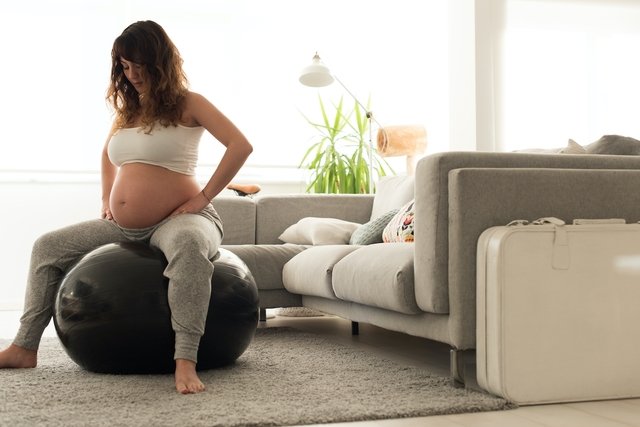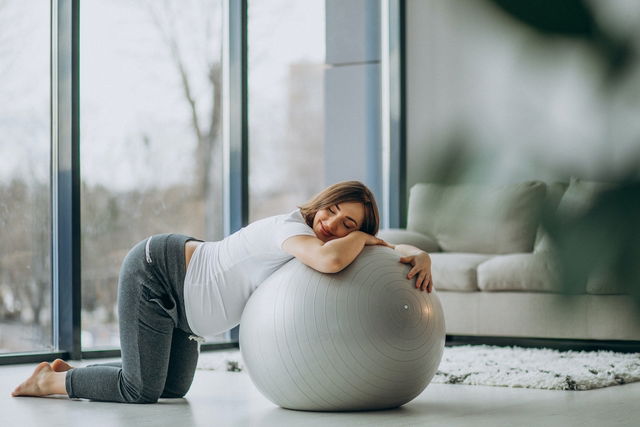Exercises to induce labor can include walking or dancing, as these movements move the hips and facilitate the baby's head to sit low in the woman's pelvis.However, pregnant women should exercises throughout pregnancy and not just on the days leading up to birth. Regular exercise can strengthen the pelvic floor and prepare the body for labor and delivery.
Natural childbirth is a normal process, and the body will generally being to prepare for labor at about 37 weeks of gestation. During this time, irregular contractions can be felt and the gradually tend to intensify and become more regular. Imminent childbirth is usually characterized by contractions that are about 10 minutes apart.
Exercises to induce labor can be done during the first phase of labor. These can promote dilation, improve blood flow to the pelvis, and can help reduce labor pain. Speak to your OBGYN to ensure these exercises are approved for you.
Some of the exercises that can induce labor and delivery include:
1. Walking

Walking is a great exercise to do during the first phase of labor. It helps to increase the frequency of contractions, which can reduce labor pain and duration. Women can walk between contractions, being sure to expect their limitations and to stop as needed.
Walking during late pregnancy can help increase to induce spontaneous onset of labor, which can reduce the need for inducing labor or scheduling a C-section. Walking can also improve the Bishop score, which is a scale used by obstetricians to assess the maturation of the baby, cervix and the probability of vaginal birth when labor is induced.
2. Dancing

To facilitate the first phase of labor, woman can also dance, as rhythmic movements and grabity can help promote the baby's movement lower into the pelvis.
3. Pelvic stretch on the ball

Another exercise that can be done during the first phase of labor is pelvic stretching on a yoga ball. It helps to increase blood flow to the pelvis, stimulate dilation for normal birth and encourage the baby to descend.
To stretch your pelvis on a yoga ball, sit on the ball with your feet flat on the ground and your legs opened wide. Rotate your hip in circular motions slowly, or roll your hips forward and back.
4. Bending forward

Bending forward can promote labor as it helps move the pelvic bones apart to make space for the baby's head-
Stand with your legs hip-width apart, and bend forward at the tips, holding a wall, chair or railing. Bend your knees slightly and elongate your spine to stretch your hips and back. You can move the hips from side to side while in this position, being sure to inhale when stretching and exhale when returning to the starting position. Repeat this stretch 10 times on each side.
Another way to bend forward is using a Pilates ball. Kneel on the floor and hold the ball in front of you. Then bend forward at the ball to move your hips.
5. Butterfly pose

Butterfly pose can be done in the first stage of labor as it helps improve pelvic flexibility and blood flow to facilitate labor.
Sit on the floor, and bring the soles of your feet together with your knees facing outward. Hold your ankles or feet and try to pull your heels as close to your body as you can. Hold this position for about 10 seconds, relax and repeat another 5 times.
This exercise can also be done throughout pregnancy to prepare the woman's body for labor. It stretches the leg and back muscles and relieves tension in the lower back. It also widens the hips and strengthens the pelvis muscles. However, avoid this exercise if you have severe lower back pain or knee pain.
It is important that to only complete these exercises if you are physically feeling well. Be sure to speak to your OBGYN to ensure these are safe for you.
Tips to make labor easier
In addition to exercises, other tips that can make labor easier include:
- Urinate at least once every hour, as a full bladder can lead to discomfort and pain
- Control your breathing during contraction. Fill your lungs with air by inhaling deeply, and then release it slowly through pursed lips.
- Drink plenty of water to stay hydrated
- Eat light meals and snack when you are hungry to prevent nausea and vomiting during labor
- Choose a position that allows you to relieve pain during contractions, like getting to the floor on all fours or sitting on the floor
Be sure to remain in a calm environment, with minimal light and noise. Keep your thoughts positive and visualize the birth of the baby getting closer with every contraction.
